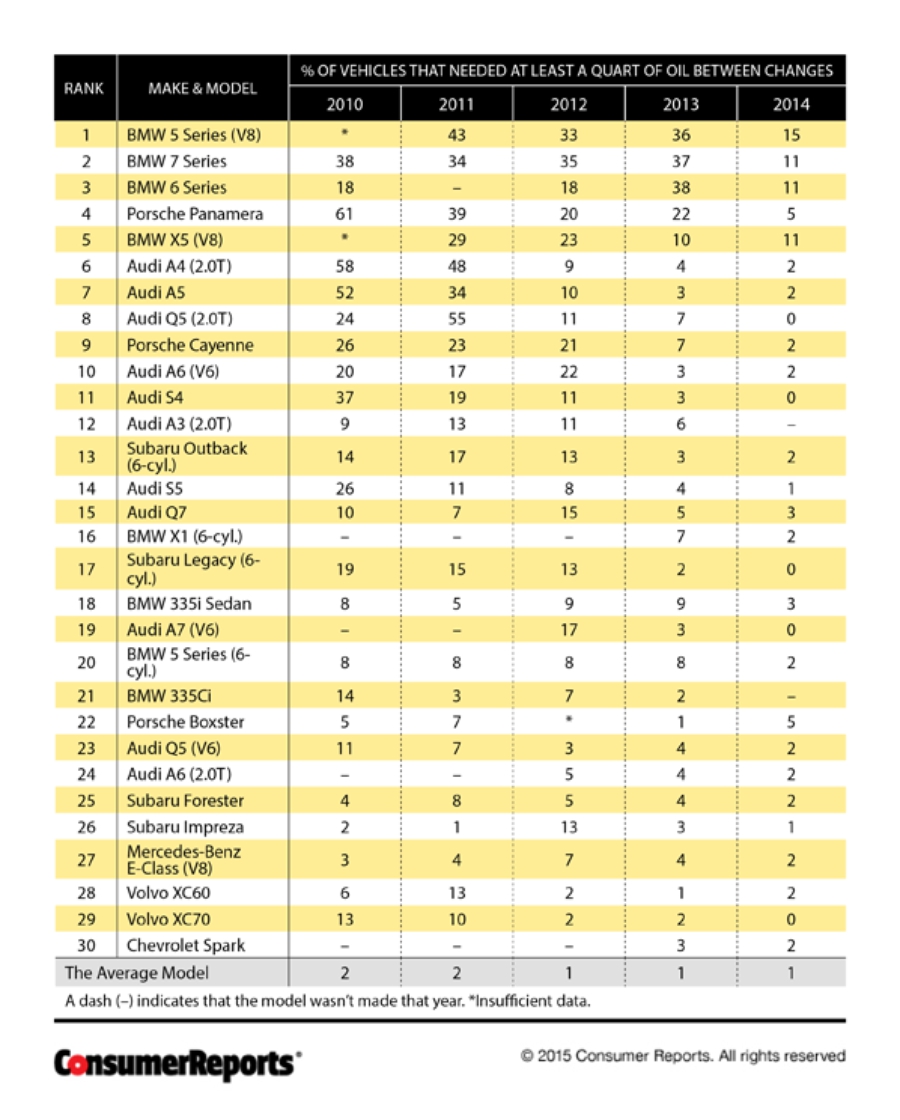Originally Posted By: Shannow
And on it we get to see overseas OEMs stating that the ability to entirely consume a sump volume inside the recommended service interval is entirely normal for a brand new engine...it's laughable.
The weird thing about that is the German OEM's are seriously over-represented in that problem, and they are the manufacturers who up until recently did not chase the CAFE credits and mostly specify the same thick oil everywhere in the world.
http://www.consumerreports.org/cro/magazine/2015/06/excessive-oil-consumption/index.htm
Quote:
Certain Audi and BMW cars’ standards state that a quart burned every 600 to 700 miles is reasonable.

And on it we get to see overseas OEMs stating that the ability to entirely consume a sump volume inside the recommended service interval is entirely normal for a brand new engine...it's laughable.
The weird thing about that is the German OEM's are seriously over-represented in that problem, and they are the manufacturers who up until recently did not chase the CAFE credits and mostly specify the same thick oil everywhere in the world.
http://www.consumerreports.org/cro/magazine/2015/06/excessive-oil-consumption/index.htm
Quote:
Certain Audi and BMW cars’ standards state that a quart burned every 600 to 700 miles is reasonable.





